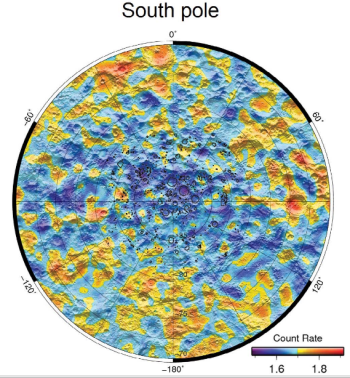
A little over a month ago I reported here on Behind the Black some recent results from the LEND instrument on Lunar Reconnaissance Orbiter (LRO) that had found significantly less water in the permanently shadowed craters at the lunar poles than previously thought. To quote again from that paper’s abstract, which I will henceforth refer to as Sanin, et al:
This means that all [permanently shadowed regions], except those in Shoemaker, Cabeus and Rozhdestvensky U craters, do not contain any significant amount of hydrogen in comparison with sunlit areas around them at the same latitude.
And from the paper’s conclusion:
[E]ven now the data is enough for definite conclusion that [permanently shadowed regions] at both poles are not reservoirs of large deposits of water ice.
Paul Spudis of the Lunar and Planetary Institute in Houston, Texas and one of the world’s top lunar scientists then commented as follows:
You neglect to mention yet another possibility — that this paper and its conclusions are seriously flawed in almost every respect. The veracity of the LRO collimated neutron data [produced by the LEND instrument] have been questioned on serious scientific grounds. Other data sets (spectral, radar) suggest significant amounts of water at both poles, billions of metric tons in total.
Spudis also discussed this scientific dispute at length on his own blog.
When I read Dr. Spudis’s comment I immediately emailed William Boynton of the Lunar and Planetary Laboratory at the University of Arizona, one of the authors of the Sanin et al paper, to get his reaction. Today he sent me the following detailed explanation, describing the basis of the controversy and why he believes the LEND data is valid.
» Read more

